Why Sacred Society use spatial audio to enhance relaxing ambient music
Bee’s wings, brain waves and binaural beats — SSMG are on a mission to immerse.
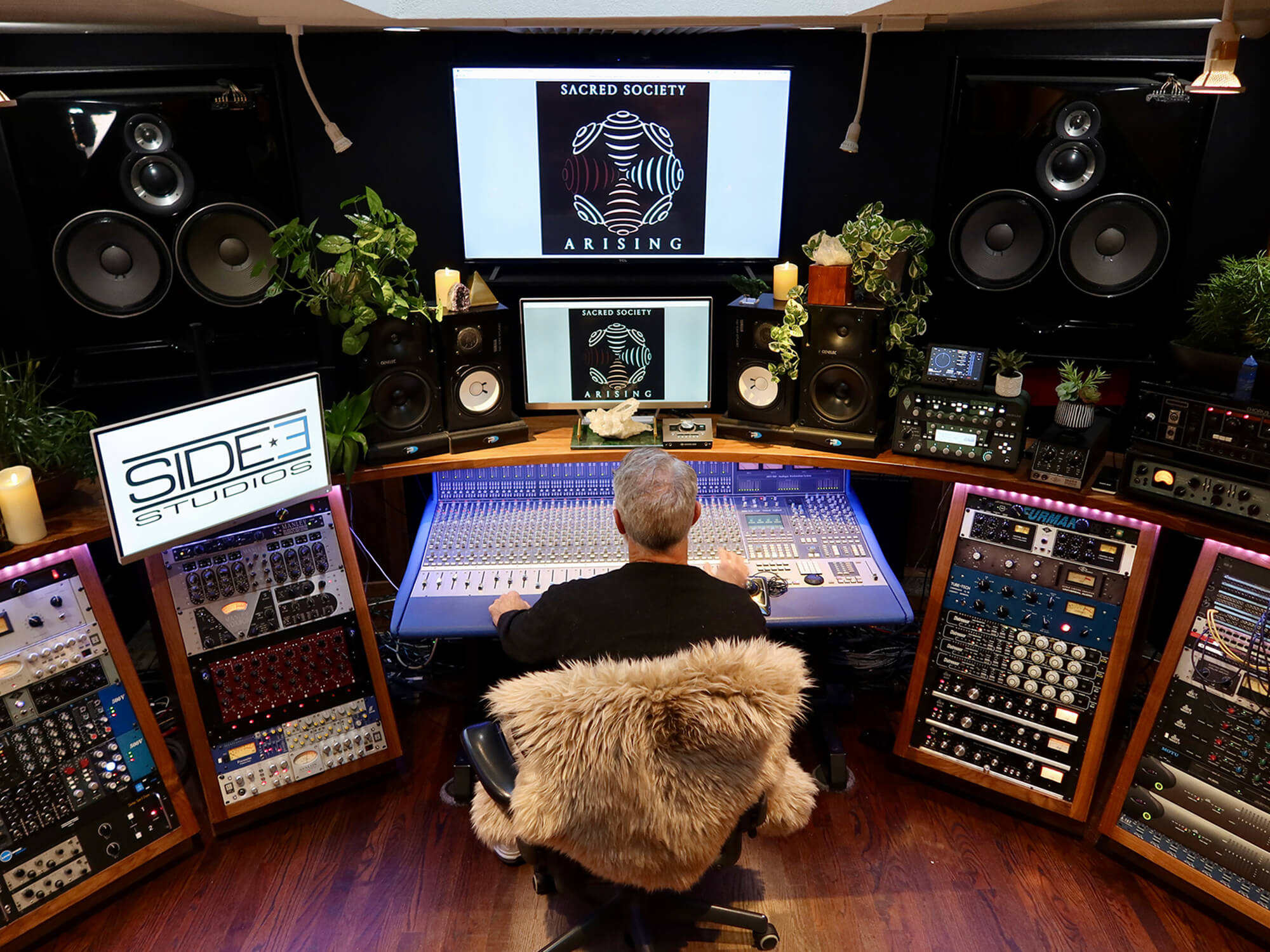
Adelio Lombardi, co-founder of the Sacred Society Music Group, in the Side 3 studio
For thousands of years, people have used sound and music as methods for healing. Sacred Society Music Group is putting those methods in the hands (and ears) of the listener using the power of spatial audio, creating sonic landscapes with ambient music that induces visceral experiences.
Sacred Society Music Group (SSMG) is the record label arm of the Sacred Society Wellness Center, based in Denver, Colorado. Every song SSMG releases is mastered in 7.1.4 Dolby Atmos with one thought in mind: “We’re completely surrounding you,” says Bradley Roulier, one of the co-founders of SSMG, also a co-founder of Beatport and a member of the dance music project Manufactured Superstars.
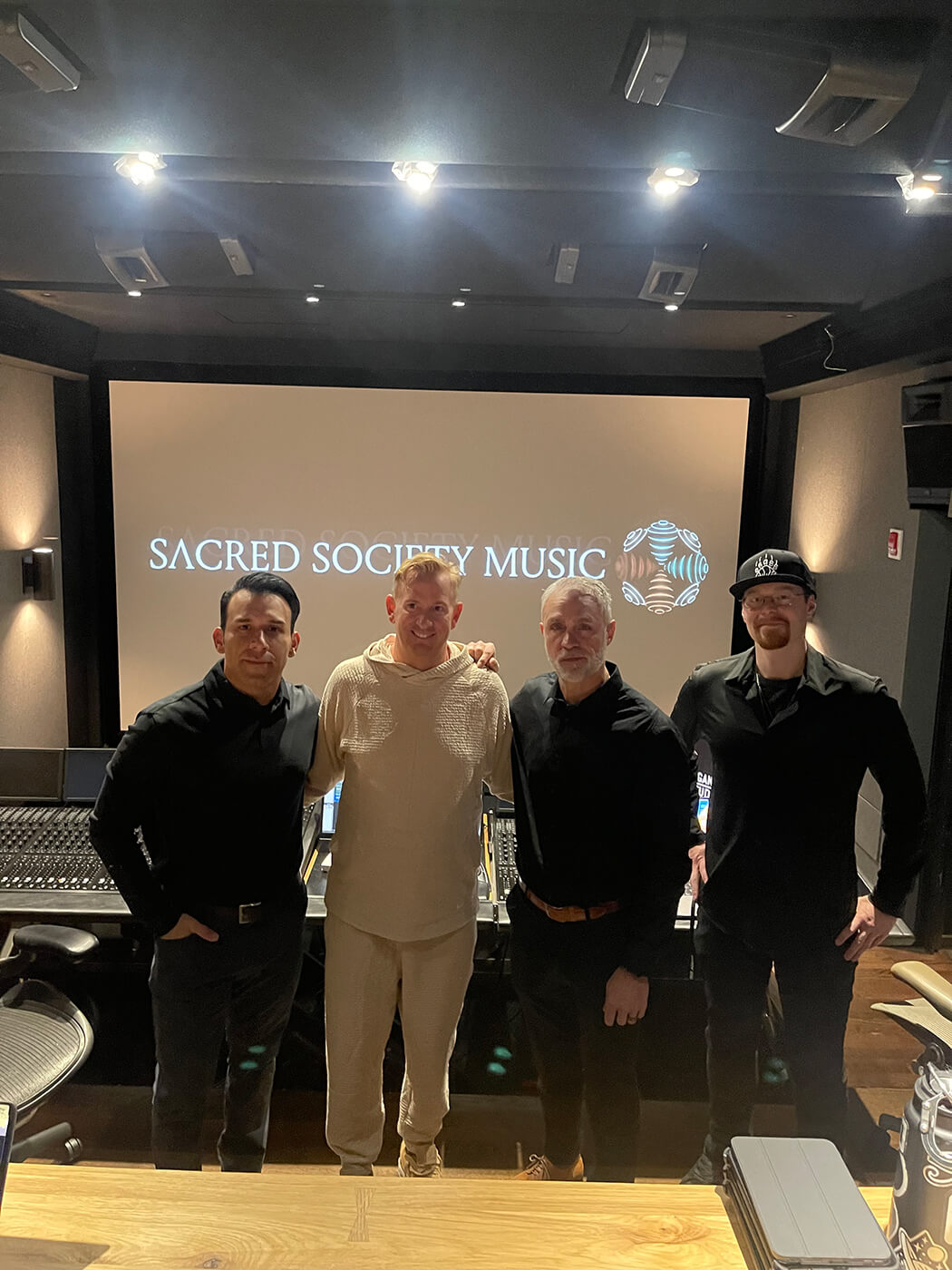
Studies have shown that surrounding oneself in sound baths benefits emotional and physiological health. Sacred Society Wellness Center hosts sound baths in a fully equipped Atmos room, but SSMG also streams its music on Atmos-compatible platforms like Amazon Music, Tidal, and Apple Music.
By making these Atmos mixes readily available, SSMG is enabling people to listen to their music for self-healing, and in 2024, more and more people are looking for ways to heal themselves.
In February of this year, “#selfhealers” on Instagram had 955,000 posts. In June 2020, it had 160,000. Furthermore, the self-improvement market in the US was worth $9.9 billion in 2019 and was expected to reach $13.2 billion by 2023, according to a Gitnux study from last year.
“When we were 22 years old, we weren’t depressed,” says Roulier, who was throwing raves as early as the late 90s. “There wasn’t this isolation that people have [today]. You’re going to spend a lot of time by yourself, so what can you do when you’re by yourself to help yourself? You can have all these people around you to give you support, but at the end of the day, it’s you. You’re the one that has to get yourself out of bed every morning. Society is making it really okay to do whatever it is to make you feel better.”
SSMG is equipping people to feel better through three playlists: FOCUS, ENJOY, and REST. Each playlist is curated for eight hours of the day.
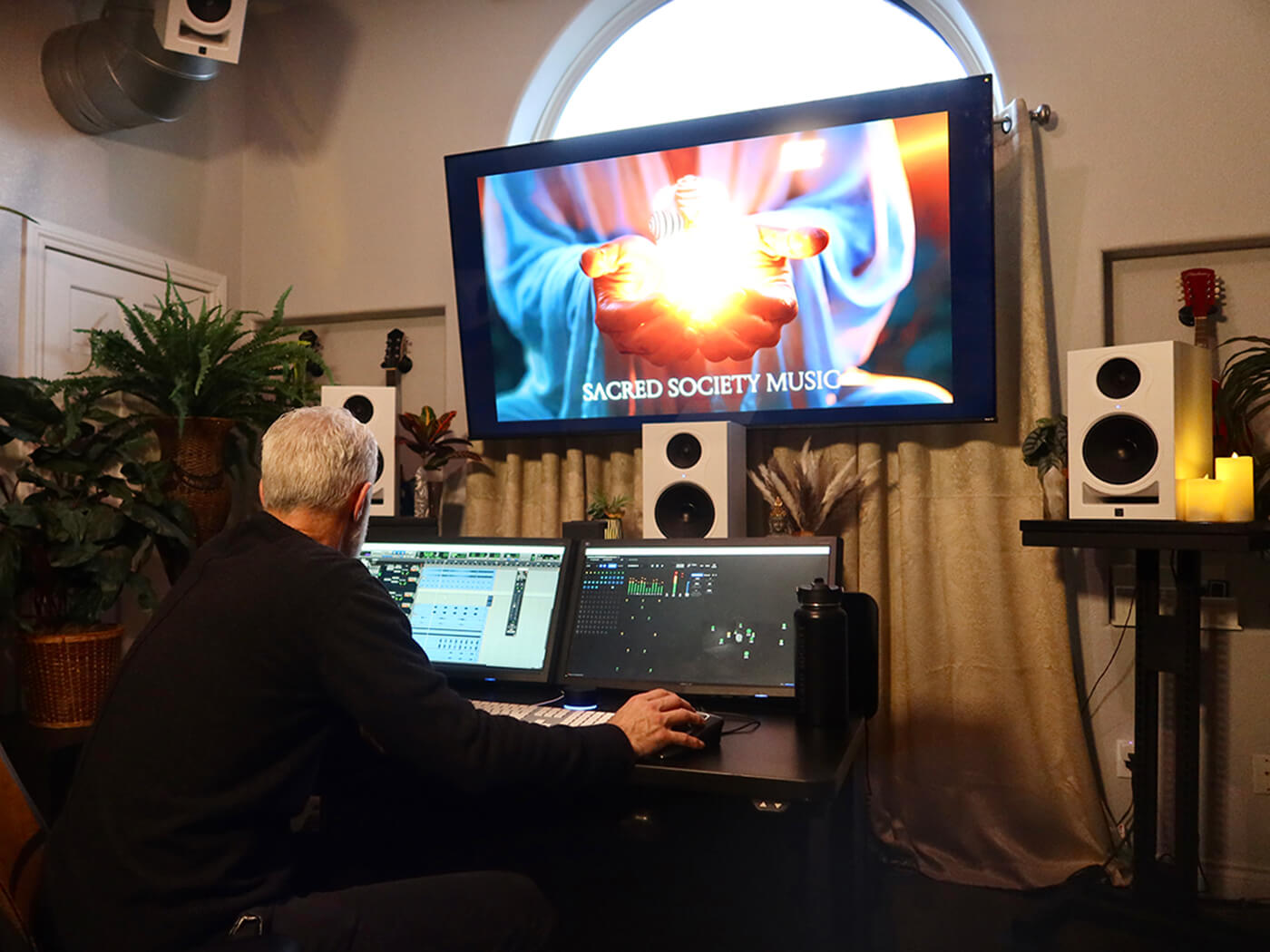
FOCUS is for working, studying, or any activity that requires consistent attention. The playlist includes tracks like Blissful Afternoon that employ lighter beats and smoother motions around the Atmos soundscape. It’s active enough to maintain the listener’s attention, but not so intricate as to be distracting.
ENJOY is for relaxing after work. Ancient Chant is in the ENJOY playlist because it demonstrates the full power of Atmos. Drums, vocals, and dozens of other different sounds shift through the 12 speakers, placing the listener inside a cocoon of chillout music as they dance, cook, or do anything that lights them up.
Finally, REST, the sleep playlist, is almost entirely ambient. Many of the tracks like Dream Space have no drums at all. Instead, they submerge the listeners in fluid frequencies. No one sound captures any attention. It’s pleasant music to help clear thoughts from the mind. Perfect for winding down at the end of the day.
Roulier’s had trouble sleeping for years, and he listens to the REST playlist in Atmos every night as part of his routine before bed.
“Sleep is the most important aspect of our lives. When you rest is when you heal and recover. If you’re not rested, it’s really hard to have a good day,” Roulier says.
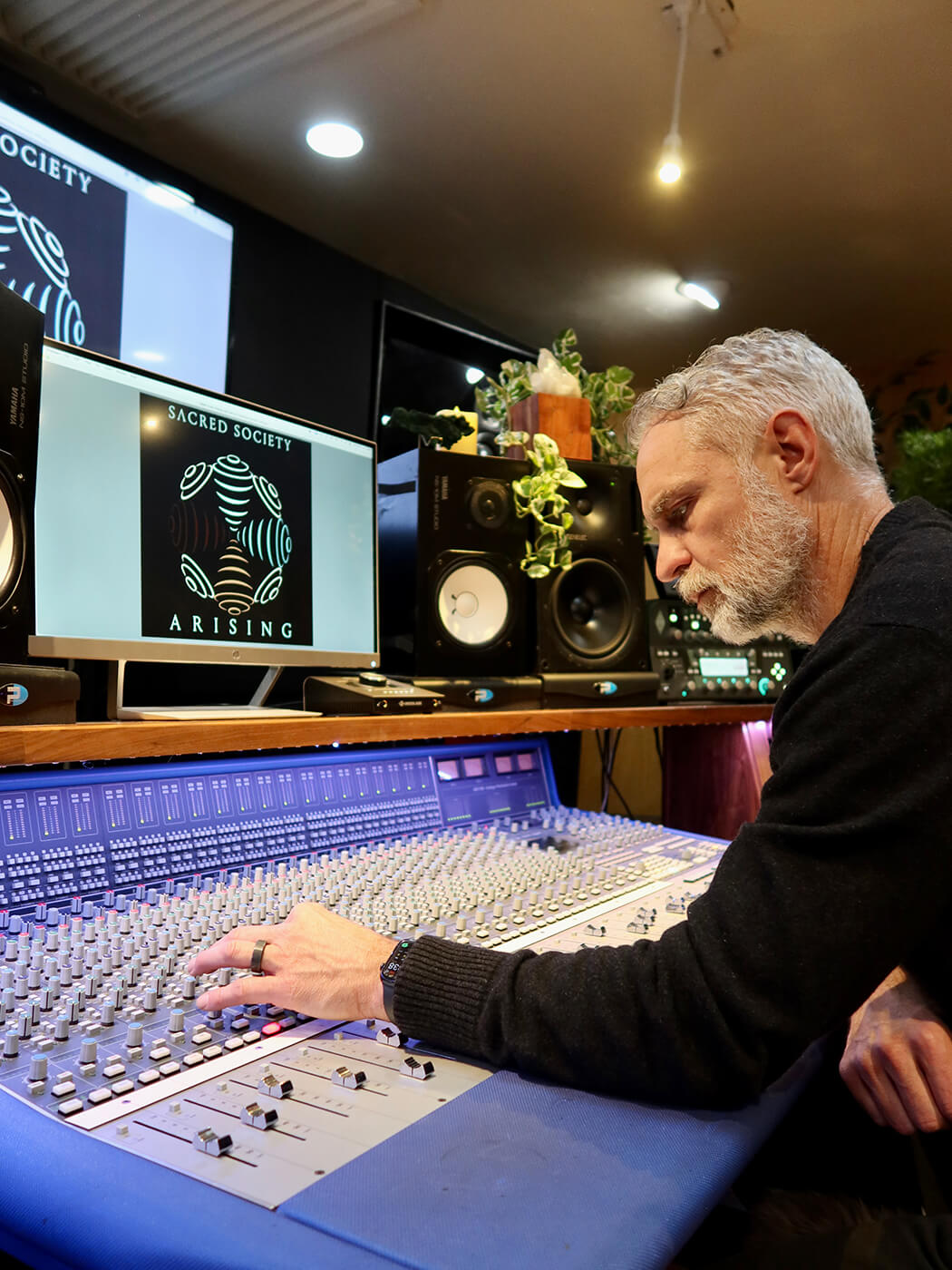
“I’m 50 years old. When I was 45–46, I started having these issues with sleeping and anxiety. I turned to [ambient music] as my medicine, and it worked. It made me a believer,” says Adelio Lombardi, another co-founder of SSMG, founder of Side 3 Entertainment, and owner of Side 3 Studios.
Lombardi and Roulier have known each other for 20 years, and their team masters every SSMG release in Lombardi’s Kali Audio Atmos studio.
This collaboration was sparked about a year ago, while Roulier was working with Barbie Beltran, founder of the Sacred Society Wellness Center, on a spa that would feature immersive music for sound baths and other wellness activities.
That project fell through when Lombardi had just started working in Atmos.
“I was like, ‘Dude, if you want to do it next level, come check this out.’” Lombardi said to Roulier. When Roulier heard music in Lombardi’s studio for the first time, the thought of a rainstorm immediately popped into his mind.
“I have a vision of doing a track of a West Coast storm. You’re on a beach on the West Coast. You can see a thunderstorm coming from miles away. There’s nothing you can do. The storm rolls in, comes in super heavy, and leaves. Kind of a metaphor for life. Storms are going to happen, and we can translate that through our music,” Roulier says.
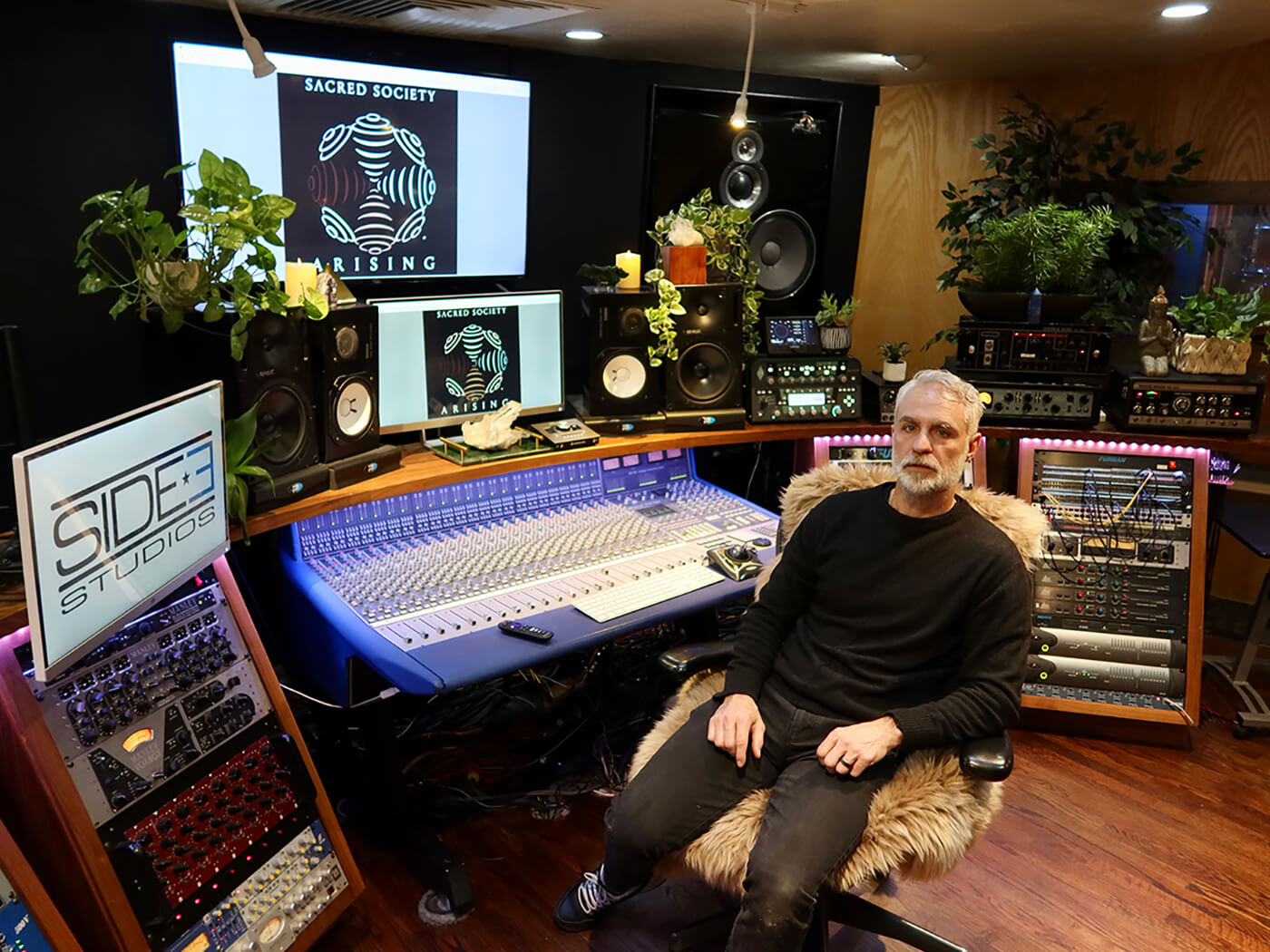
Shortly after connecting with Lombardi via the Atmos studio, Roulier brought in Andy Flebe, Head Engineer and Studio Manager at Side 3 Studios, to serve as the lead engineer for SSMG, and Jeziel Quintela, who worked with Roulier on Manufactured Superstars, to be their in-house producer. Quinetela has made 23 of the over 50 tracks SSMG has released.
Quintela starts his SSMG productions in Ableton Live, using popular wavetable synthesizers like Xfer’s Serum. Oftentimes, there is a specific healing intention behind the tracks as well.
For example, Beltran wanted to release a track with a focus on sounds in the frequency range of 20-300Hz. That’s around the fundamental frequency of bees’ wings when they fly, which is reported to help people relax. From there, Quintela picked chords that resonate with the notes produced by that fundamental frequency range as the basis for the track Dance of the Bees.
Quintella makes these tracks in stereo, but because they will be mastered in Atmos, he can get creative with other elements like reverb and layering.
“When you create a pad, you can layer more sounds. More pads, more of a lead sound, more of an analogue sound, and from that, you can add texture to it. You can notice the difference in all of the speakers. In stereo, it’s just in two ears. You cannot hear the dynamics in all the sounds and the layers,” Quintela says.
When Quintela passes a track to Flebe for engineering in Atmos, Roulier listens to every speaker in the room individually. He checks what sound is coming from where and provides notes on what sound may need more volume or may need to come from a different angle. After he approves the final master, SSMG releases the track.
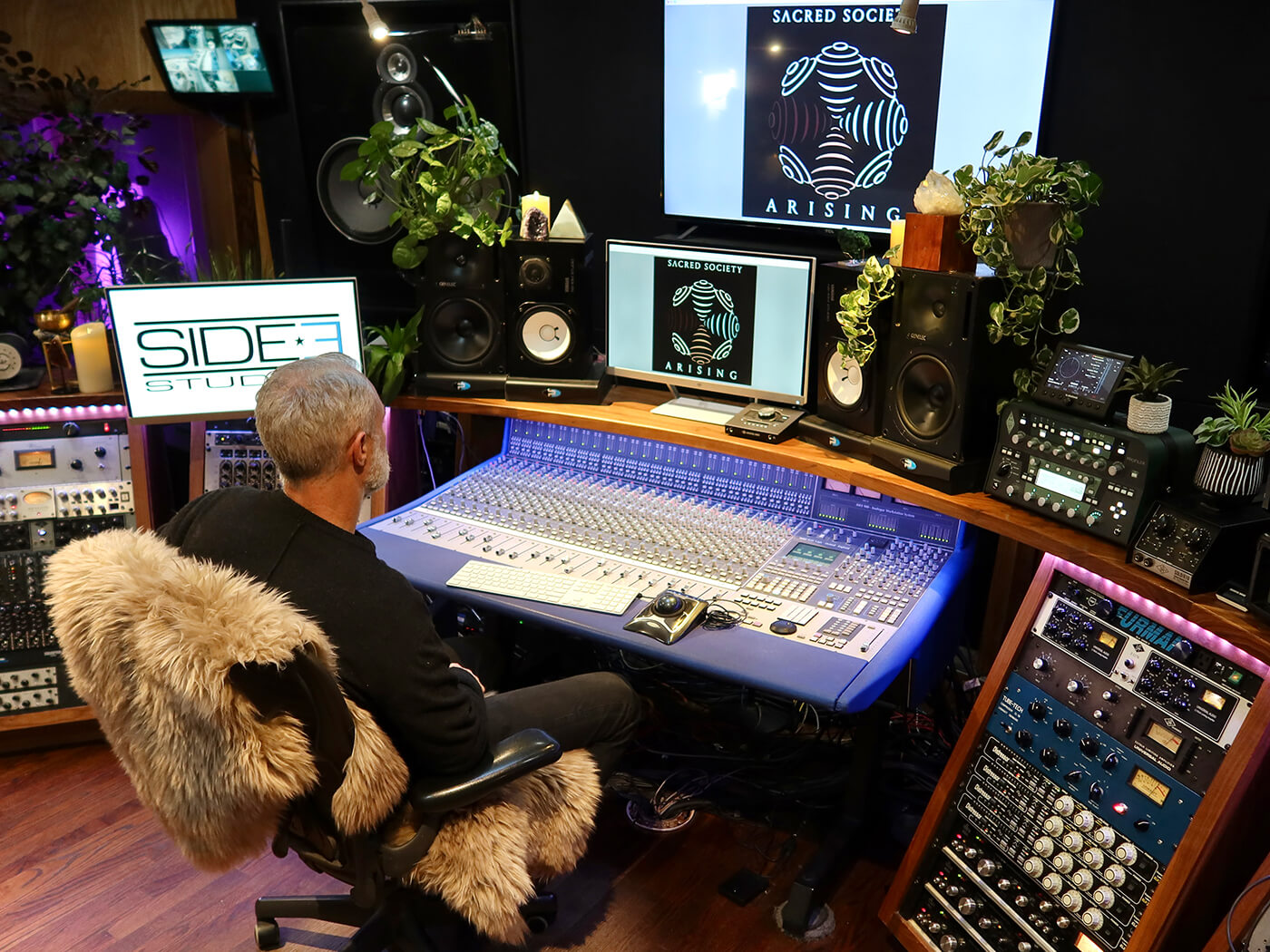
“Pretty much all the time, stuff is coming out of every speaker. Especially in ambient, because ambient by nature doesn’t have drums,” Roulier says. “We’re trying to fill this space around you.”
“You want to maximize the tech, but you don’t want to make it a circus either. Immerse a person, but if it’s a relaxing song, you don’t want to have 90 million things flying around you just because you can,” Lombardi says. “You can have all the tech in the world; if the music sucks it doesn’t matter.”
While Atmos systems aren’t standard tech for consumers yet, they are becoming much more accessible.
For home theaters, a Polk Signa S4 soundbar is $299. Then, for headphones, there are RIG gaming headsets with Atmos capabilities for as little as $29.99. These certainly don’t come close to the 7.1.4 studio at Side 3, nor to the 64-speaker setups Dolby has created before. But they can give you a taste, at least.
However, SSMG ensures every song they release, regardless of format, will provide the desired sonic effect of FOCUS, ENJOY, or REST. In addition to the Atmos mix, Flebe also makes a stereo mix for each song. He does it immediately after the Atmos mix is approved to ensure the ideal sound is still in his head.
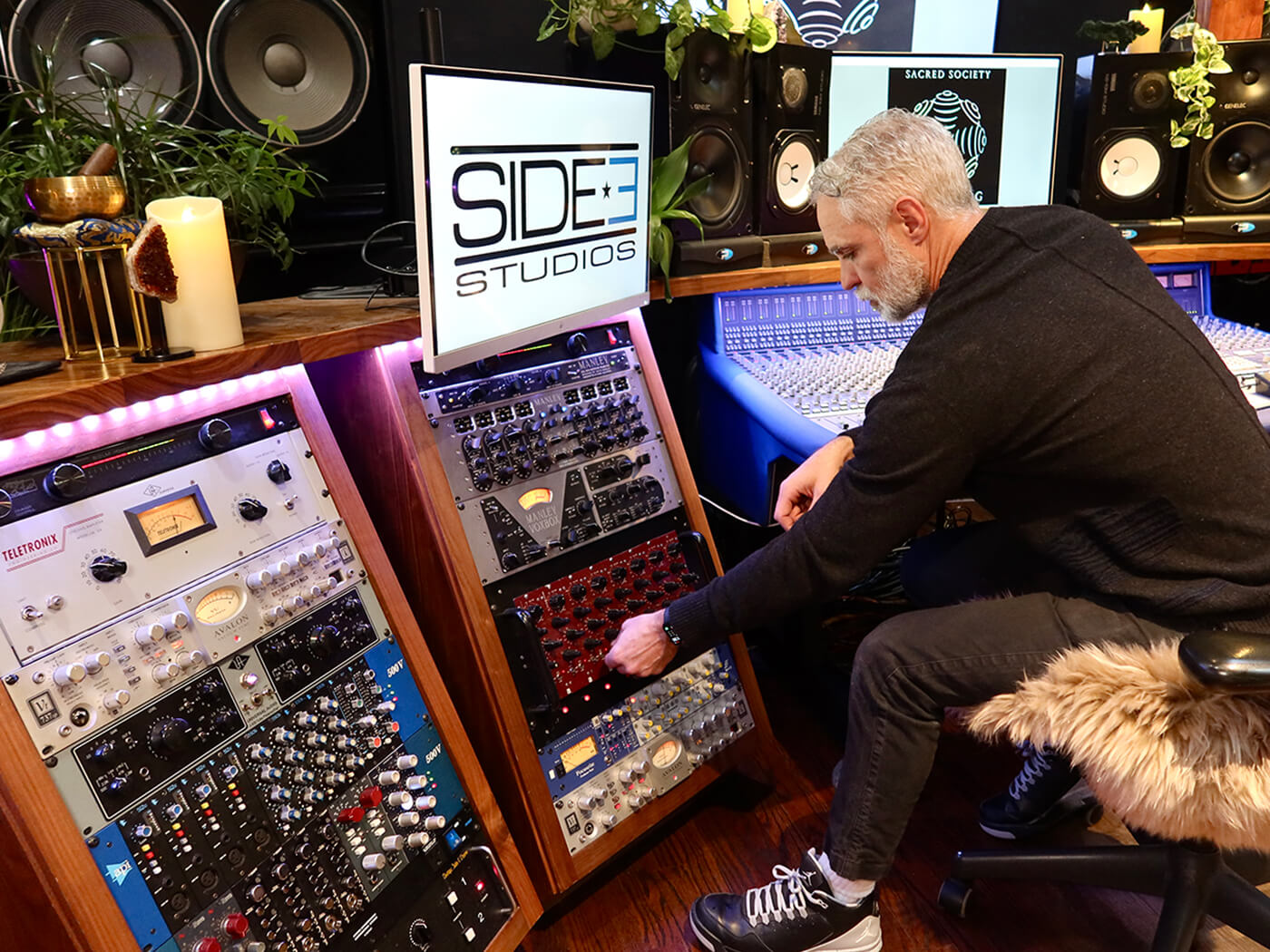
Once the stereo mix is complete, Roulier AB tests the songs on numerous systems. He listens on headphones, laptop speakers, Alexa Studio, and his Sonos Arc system, which mimics Atmos by firing sound at different angles out of its three speakers. So far, Roulier has only taken down two tracks for additional polishing before posting them again.
“I put our song on a YouTube channel, and it still sounded cool,” Lombardi says. “The Atmos file is going to adapt to what you have, and it’s going to give you the best it can deliver you.”
No matter how the track is delivered, SSMG’s core intention is always to make people feel good.
“When you’re listening to this, you’re the most important person in the universe,” Roulier says. “This is all for you.”
Learn more at sacredsocietymusic.com.